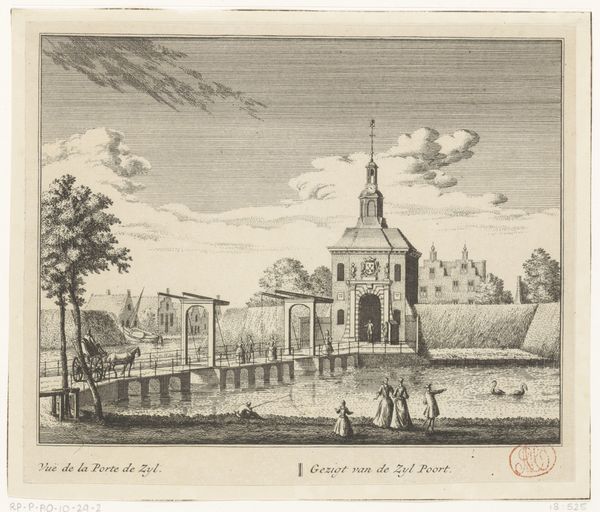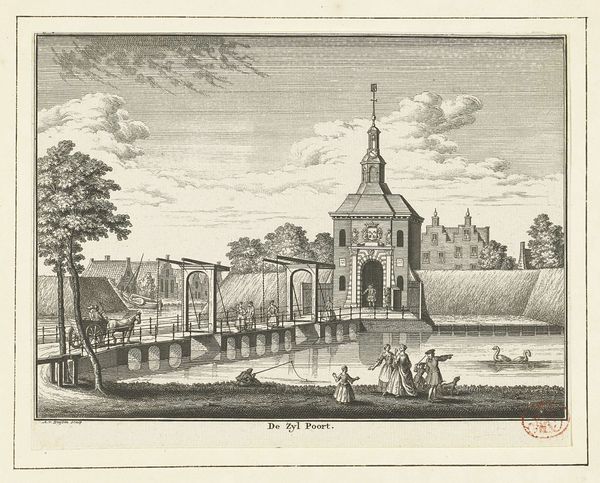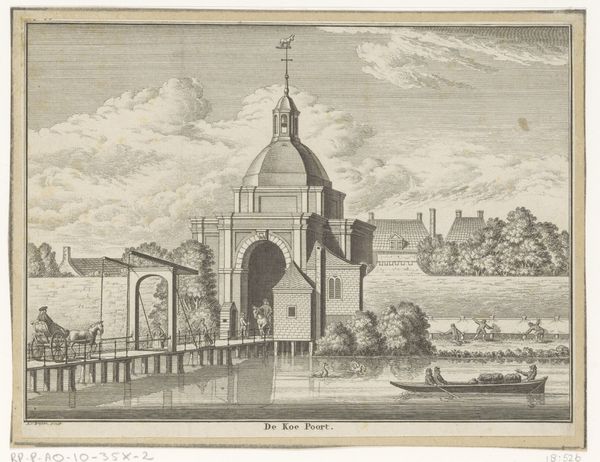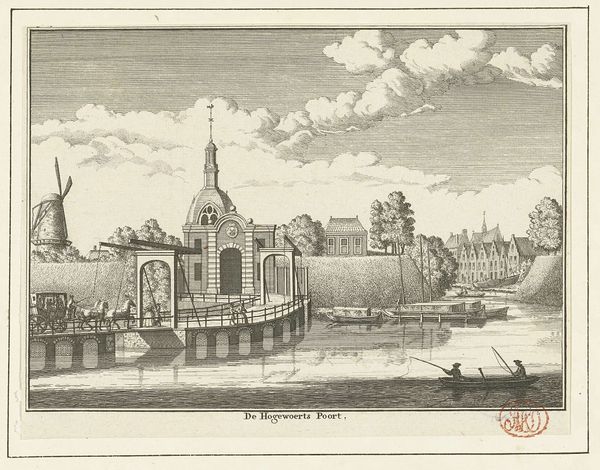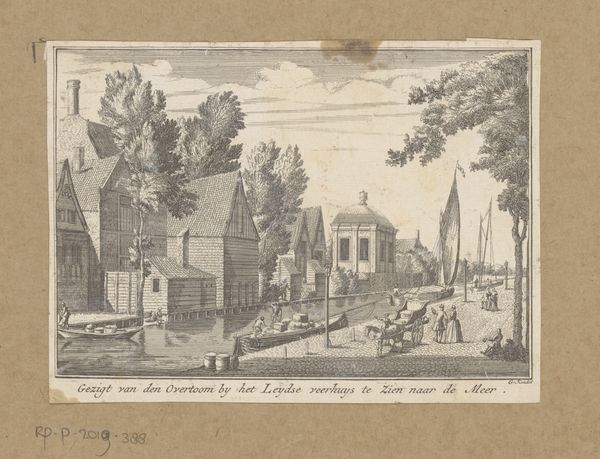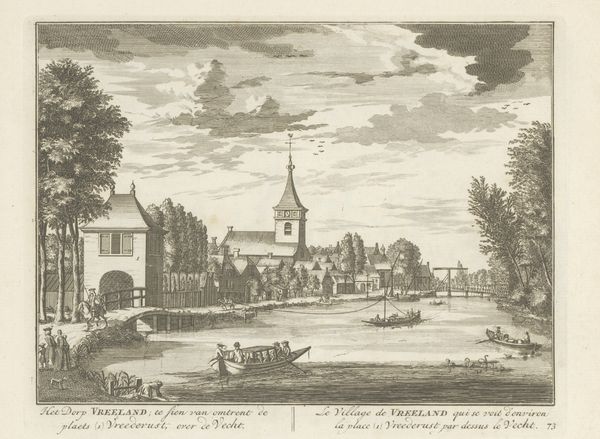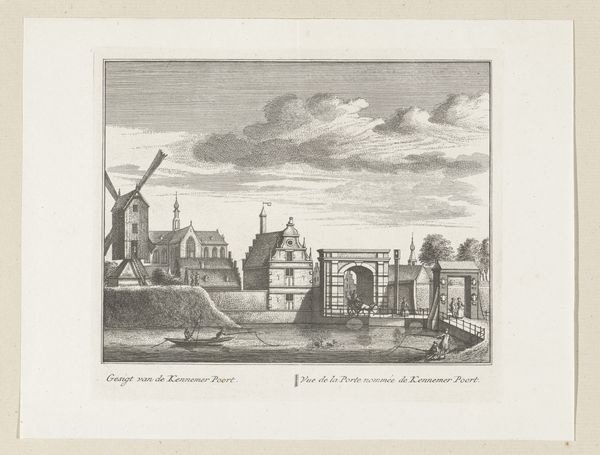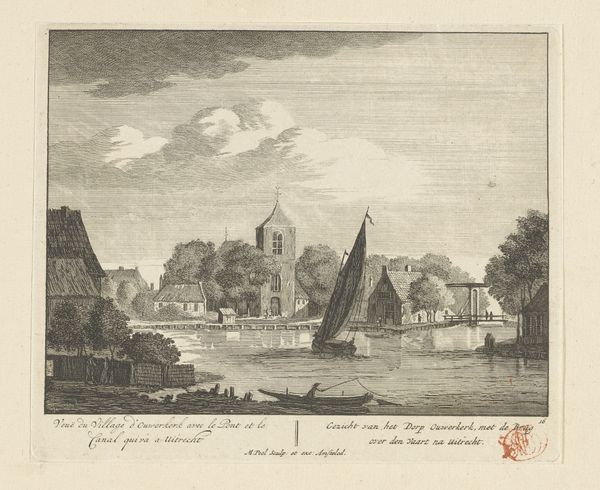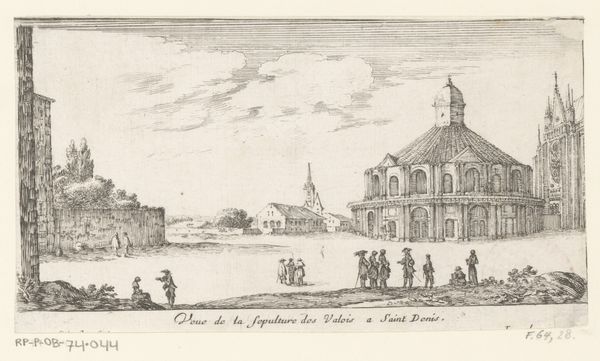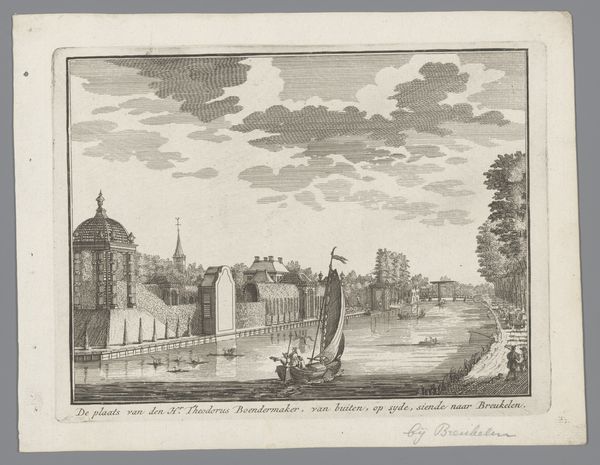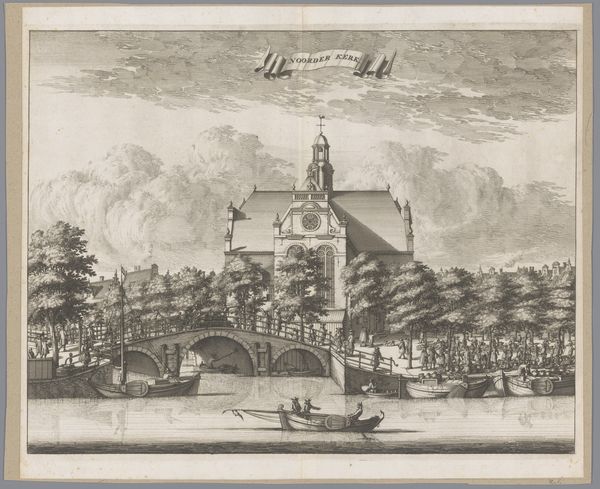
print, engraving
#
baroque
# print
#
landscape
#
cityscape
#
engraving
Dimensions: height 165 mm, width 199 mm
Copyright: Rijks Museum: Open Domain
Curator: Before us, we have an engraving titled "Gezicht op de Koepoort te Leiden," or "View of the Koepoort in Leiden," created by Abraham Rademaker after 1732. The work, currently held at the Rijksmuseum, showcases a city gate in a detailed, almost dreamlike landscape. Editor: It has a kind of melancholic serenity about it, doesn’t it? The light is soft, even for an engraving, and that gate dominates everything, yet the everyday life around it continues. Curator: Indeed. The Koepoort, acting as a kind of threshold, was, during the 18th century, when this was made, a place of regulation and transition for Leiden. Editor: I notice the figures moving across the bridge – that simple wooden bridge contrasting so strongly with the monumental architecture of the Koepoort. They really do serve as such immediate symbols of transition and impermanence in this rather rigid architectural form. Curator: Precisely. Rademaker’s choice to depict the gate in its broader environment speaks to its integration with city life, yet there’s also a hint of separation with that surrounding water. It reminds us of city walls and the controlled entryways from that time, and who had power. The style aligns with late Baroque influences that still valued detailed representation of landmarks, while simultaneously glorifying daily life. Editor: Yes, it is the intersection that grabs me: architectural authority balanced against that charming Dutch windmill and everyday citizens milling through. Also, considering engravings are inherently replicable, one wonders about the power of dissemination. How did images such as this construct notions of the city in the minds of people that may not have been to Leiden? Curator: Excellent question. Images like these absolutely shaped public perception and even helped foster a sense of civic pride and identity, or otherness from those locations. Engravings made visual culture more accessible, impacting social imaginaries regarding city planning. Editor: Well, it certainly inspires questions about how we visually process borders in all of their physical and cultural forms, today. Curator: It’s incredible to observe how symbols in artwork such as these still resonate with questions of how communities defined themselves and controlled populations then and now.
Comments
No comments
Be the first to comment and join the conversation on the ultimate creative platform.
